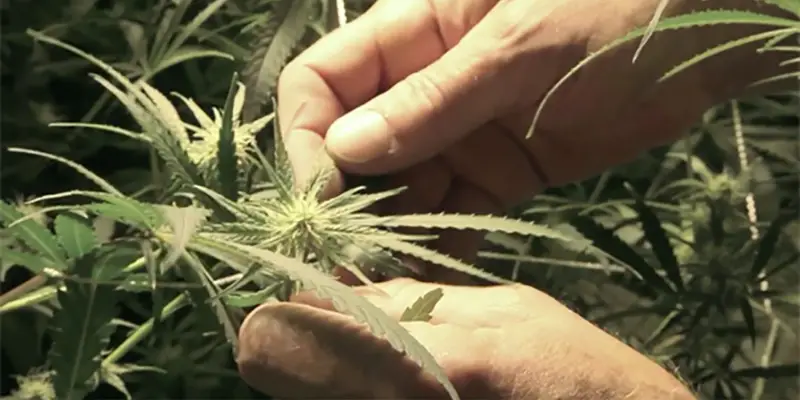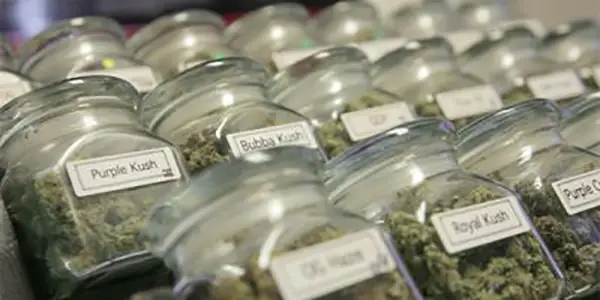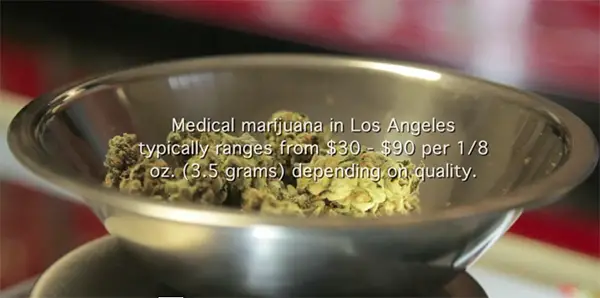CALIFORNIA HIGH: Recreational Weed, Yes Or No?

Jacqui Blue has a lifetime background in theater and writing.…
We know that the hemp plant has been used in production of products since at least the 1600s. Up until the 1930s, marijuana was legal, used, and widely accepted. In the 1930s, with the onset of the great depression and American paranoia, “reefer madness” propaganda started to sprout up, as a huge anti-marijuana prohibition came underway. The American people have been fighting for their right to the legal use of this medicinal and hugely beneficial plant ever since.
In 1996, California became the first state to legalize the medicinal use of marijuana. Several states followed California’s lead. In more recent years, a couple states have completely legalized the sale and use of recreational marijuana. In November 2016, Californians will be voting on whether or not to follow suit with the other west coast states such as Washington and Oregon and legalize recreational marijuana. California High, a documentary by Matthew O’Connor and Barnaby O’Connor, examines the argument of marijuana legalization from both sides; pro and anti.
Fire It Up
California High opens up with Allen St. Pierre, Director, National Organization for the Reform of Marijuana Laws (NORML) stating a case for the legalization of marijuana. Paul Chabot, President, Coalition for a Drug Free California, is then introduced, who states his case against it. While both of these men clearly feel equally passionate and are working hard to protect the interest of where they stand on the issue, it becomes pretty clear early on that Chabot has no facts or evidence to support his stance. He doesn’t discuss any statistics, and when presenting an alternative to natural marijuana by way of the pharmaceutical industry introducing a chemical synthetic version “that doesn’t have all those side effects”, he fails to describe any such negative side effects of marijuana; making his case against legalization very weak.
Chabot does succeed in convincing me that he’s been brainwashed by the “reefer madness” propaganda, and throughout the film I kept waiting for him to say one thing that would make him sound even remotely intelligent, to no avail. His reliance on past military and law enforcement works as a poor form of credibility to note how big the drug problem is. But if he’s really worried about drugs in California, no one is dropping dead from marijuana. However, heroin is a huge problem and kids seem to be dropping like flies. Maybe his efforts for a drug free California would be better aimed towards actual hard drugs or the big pill problem taking over American households.

Kevin Sabet, Senior White House Drug Policy Advisor, makes only a slightly better case against marijuana. Though he still doesn’t convince me that the plant should be illegal, he does make a very good point in stating that smoking marijuana (or anything) causes damage to your lungs, and probably isn’t the best way to intake the plant. Instead of making a case against marijuana, though, he just sounds like someone who was programmed or trained to be on the offensive. I don’t believe that he actually thinks it should be illegal, and again he also presents no statistics or facts to state that it’s dangerous or harmful, other than that smoking causes lung cancer.
Puff Puff Pass
It’s not surprising that the government officials working in drug enforcement sectors would make a case against it (however unconvincingly), though it’s still pretty asinine that they consider a natural plant to be on the same list as actual harmful substances such as addictive doctor-prescribed pain pills, heroin, and crystal meth.
The other proponents against the legalization of marijuana, not surprisingly, if you understand how business works, are those currently growing and selling. Why would those in the marijuana industry want to keep it illegal? Money. They’re making tons of it and don’t want the competition.

California High takes us into what is known as the Emerald Triangle, in northern California. Here we visit Humboldt County, speaking with Sheriff Wayne Hanson and District Attorney Paul Gallegos, who discuss the hazards of illegal marijuana growing in this region. Nature lovers who appreciate the beauty that our green Earth offers will enjoy the beautiful b-roll cinematography shots through the Emerald Triangle. As the film goes on, it shows how the marijuana industry brings in billions in revenue.
Planet Hollyweed
The case against marijuana is pretty weak. Yet, the case for it isn’t strong enough here either. Where does the film lack? In facts and statistics. I would have liked to have seen a discussion covering all the uses of the hemp plant, not limited to ingestion. It would have been a better film if they used facts to back up either side; both sides lacked hard evidence, although the pro-side definitely presented a stronger and better argument than the other.
With all the known health benefits and many uses of this plant, it shouldn’t be a shock that the big pharmaceutical industries would want to get their dirty hands involved. California High also discusses how the medical industry is already starting to corrupt natural medicine by way of extracting healing components of the plant, isolating that one component and putting it in pill form known as “Marinol”. But Marinol is a man-made synthetic chemical intended to mimic cannabis.
Unlike the natural marijuana plant extracts, Marinol does come with a slew of nasty potential side effects, including stomach pain, nausea, vomiting, diarrhea, dizziness and trouble concentrating. (The film doesn’t mention this, but I researched the drug itself after watching the movie). It is important for people to understand the huge difference; Marinol is a man-made drug that the government and pharmaceutical companies can patent and own, while marijuana is a natural plant that can not be patented or owned by a corporation. That’s why one is legal and the other is illegal.

It would have also helped the pro side to show actual stories from people who’ve been successfully treating diabetes, cancer and other ailments with marijuana. There are two women presented in California High who use marijuana to treat their ailments, but they only briefly make mention of it. The focus of the discussion isn’t centered on how it helps the patients using it. As a viewer interested in the subjects of people curing diseases naturally, I would have liked to hear more about that specifically, and it would have made a stronger case for the cause.
Washington, Oregon and Colorado have seen an increase in state revenue since the legalization of recreational marijuana. With California and particularly Hollywood being the trend center of the planet, the film claims that if California votes “Yes” this coming November, it could impact the entire country.
Where do you stand on this issue? Should marijuana be legal? Why or why not? Discuss in comments!
California High is now available on Digital Platforms and VOD.
Does content like this matter to you?
Become a Member and support film journalism. Unlock access to all of Film Inquiry`s great articles. Join a community of like-minded readers who are passionate about cinema - get access to our private members Network, give back to independent filmmakers, and more.
Jacqui Blue has a lifetime background in theater and writing. After achieving international acclaim with her first film Beautiful Births, she was one of 10 Directors selected by James Franco for his Master Class, "Sex Scenes". She went on to work with Jared Padalecki & T.O.N.E-z in her suicide awareness documentary, I Chose Life: Stories of Suicide & Survival and appears on-screen next to Lou Diamond Phillips in The Last Train. www.jacquiblue.net













